Over on Fitocracy, we're having an Iron Chef Apple challenge. This is my entry.
This is based on the Basic Sourdough recipe from Peter Reinhart's Bread Baker's Apprentice. BBA also contains the instructions for making your very own sourdough starter particular to your local environment.
Day 1: The Preferment
Start with a mixture of 45% hard red wheat, 45% hard white wheat, and 10% rye. Mill fine. (Alternately, any combination of unbleached bread flour, whole wheat flour, and rye flour that you like, just maintain the 10% rye ratio by weight.)


Take a few ounces of your sourdough starter, and mix in an equal weight of water and flour. Let it rise covered for 5-8 hours (it will double roughly), then put in the fridge overnight.

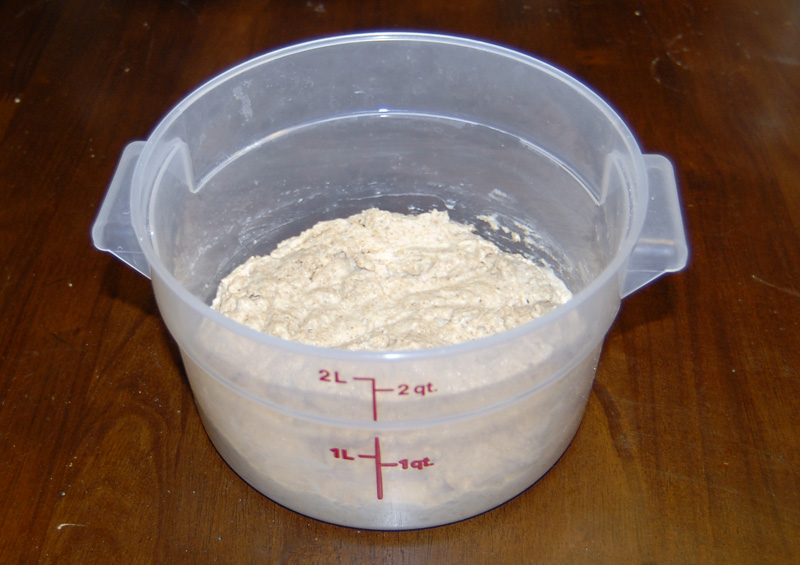
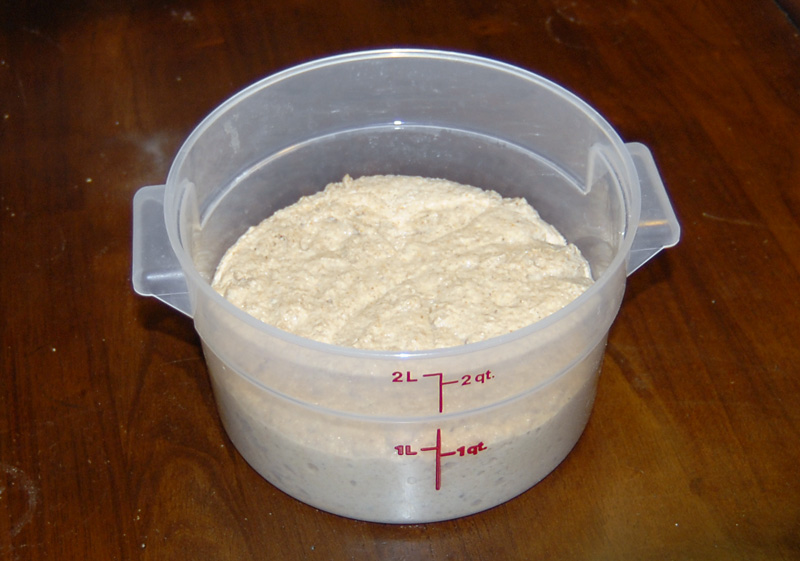
Day 2: The Dough
Dice up 3-4 apples. I used three Braeburns and a Granny Smith. Also weigh out 5 oz. of pistachios and 4 oz of blue cheese. Chop the apples up last, as they'll immediately start to oxidize and turn brown.

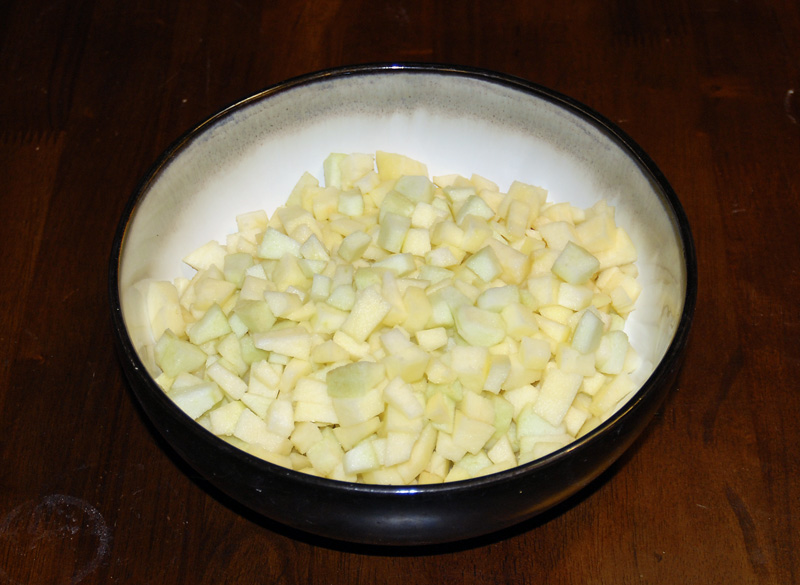
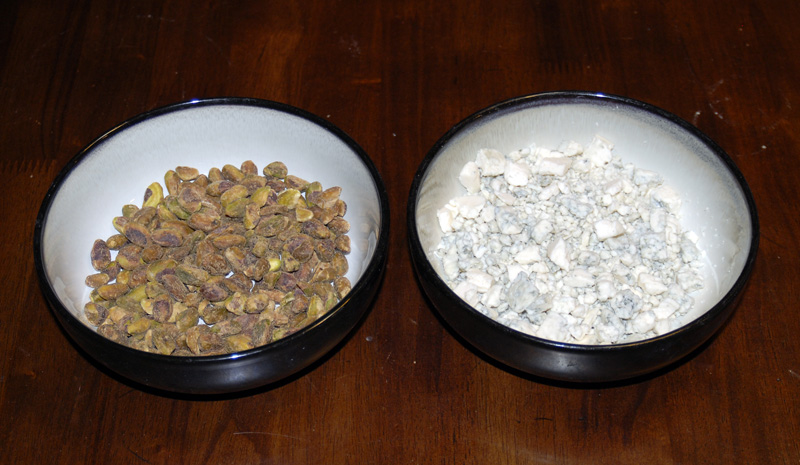
Add the water and preferment to the mixer and start it up.
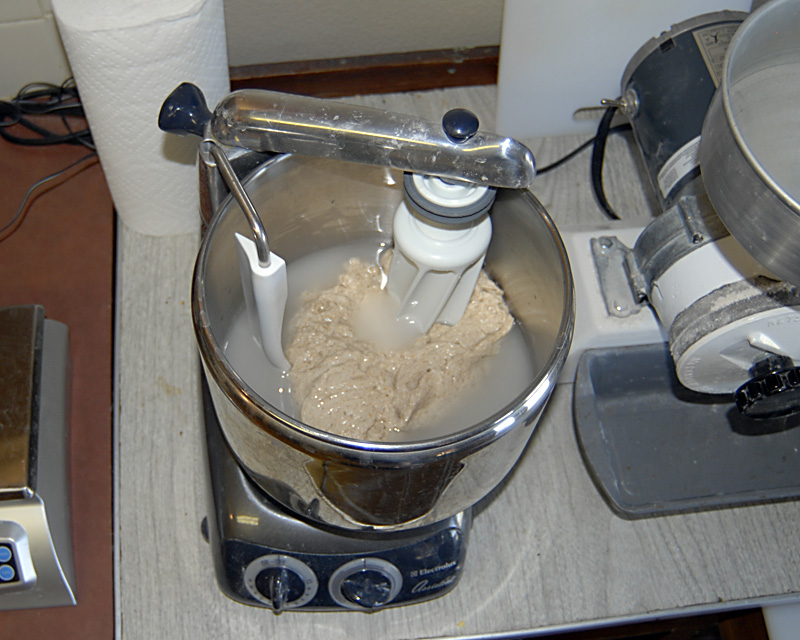
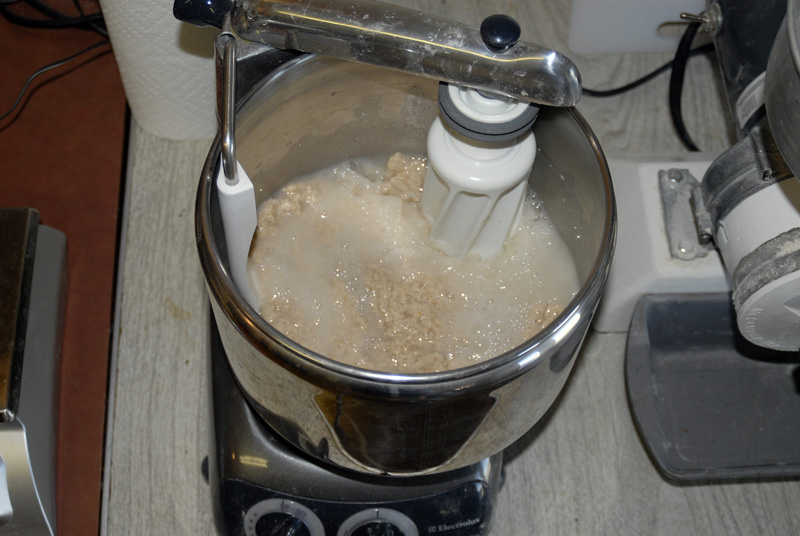
Alternate adding the apple and your flour until all the apple (and about 2/3 of the flour) has been incorporated, then alternate adding in the pistachios and the rest of the flour, adding the blue cheese at the very end.

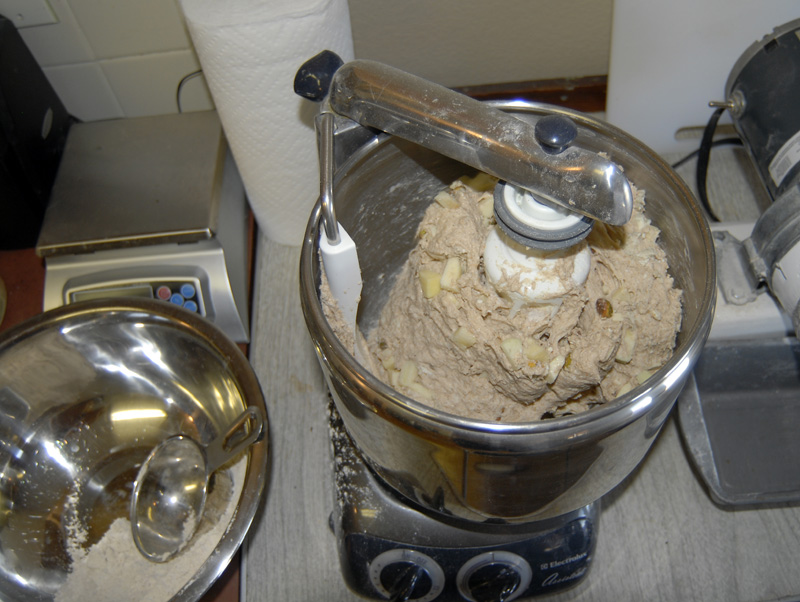
Turn the sticky mass out onto a well-floured cutting board and, using a dough blade and your hands, continue to knead and incorporate flour until it forms a fairly stiff, non-sticky dough.
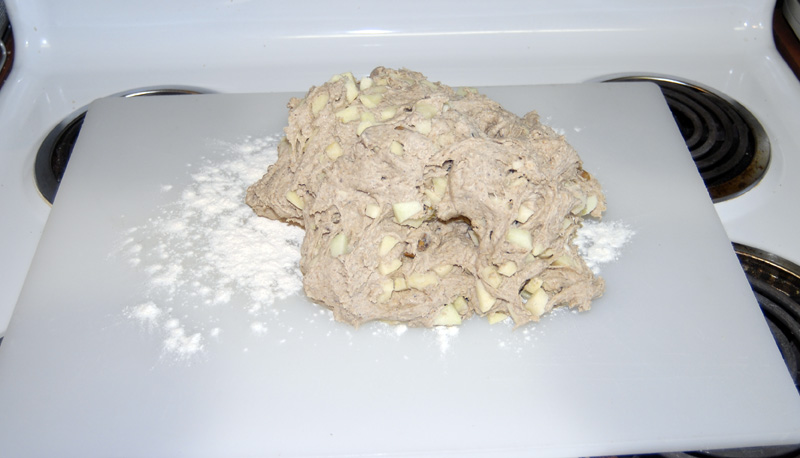

Put it in a large bowl or tub and let it rise for 4-6 hours, until nearly doubled. Refrigerate overnight.
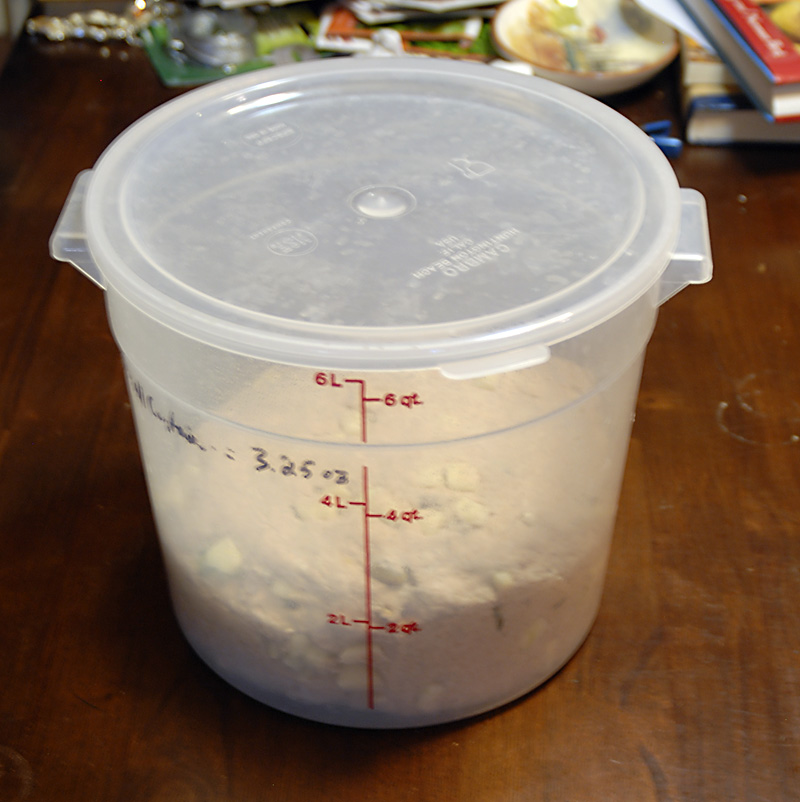
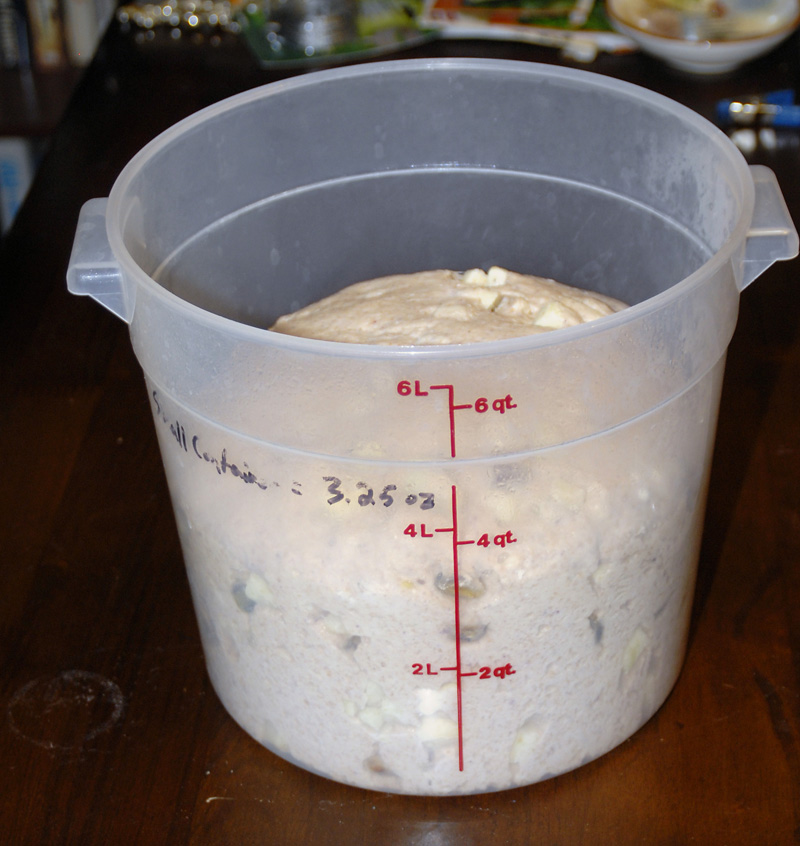
Day 3: Shape n' Bake
Remove the dough from the fridge at least two hours before shaping. It will have slowly risen more overnight.
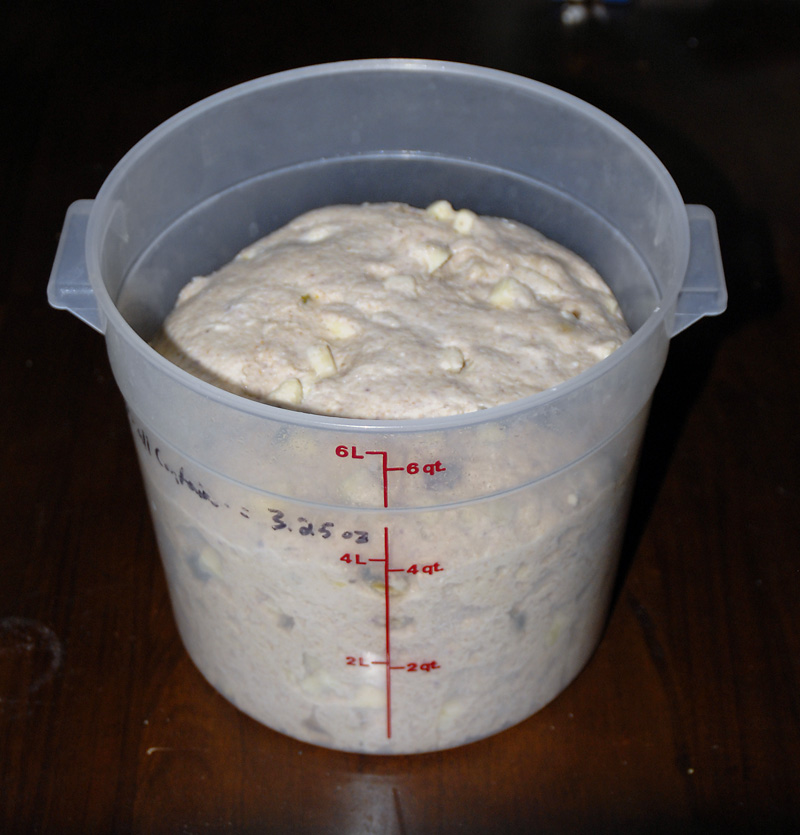
Gently divide the dough and shape it, then allow to proof covered until nearly doubled.
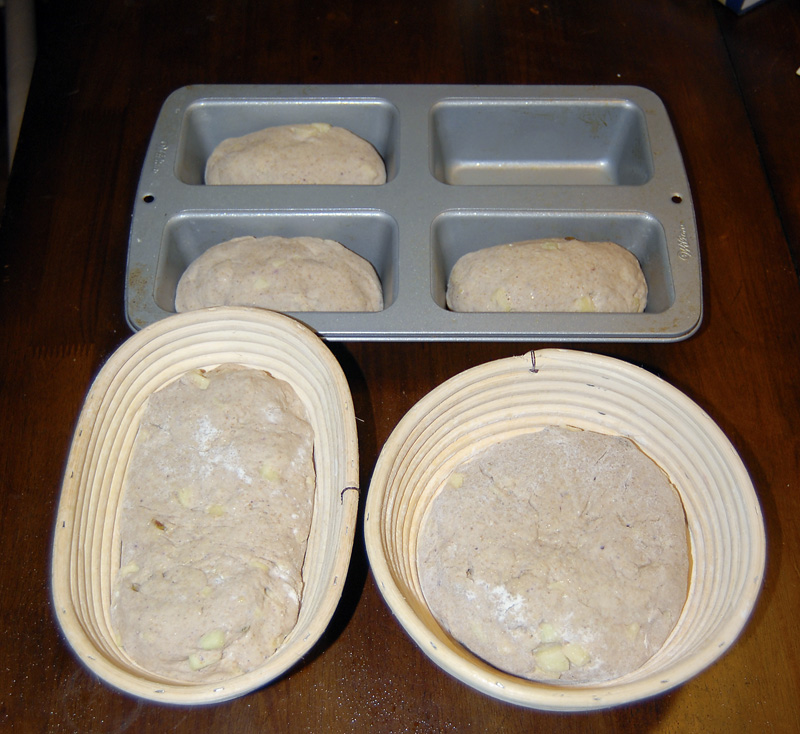
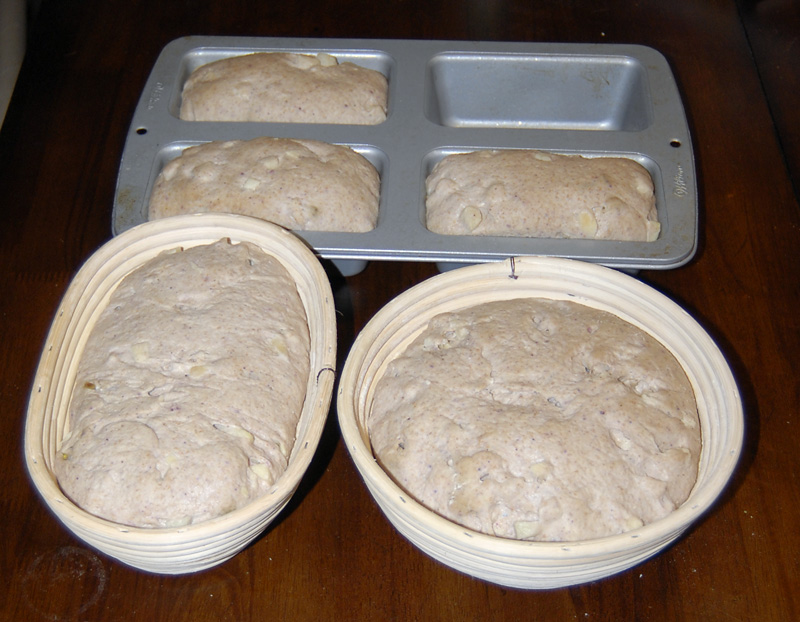
Score loaves and bake!


The result makes great sandwich bread -- no cheese is needed, just a couple of pieces of ham. It's also good toasted with honey for breakfast.
































